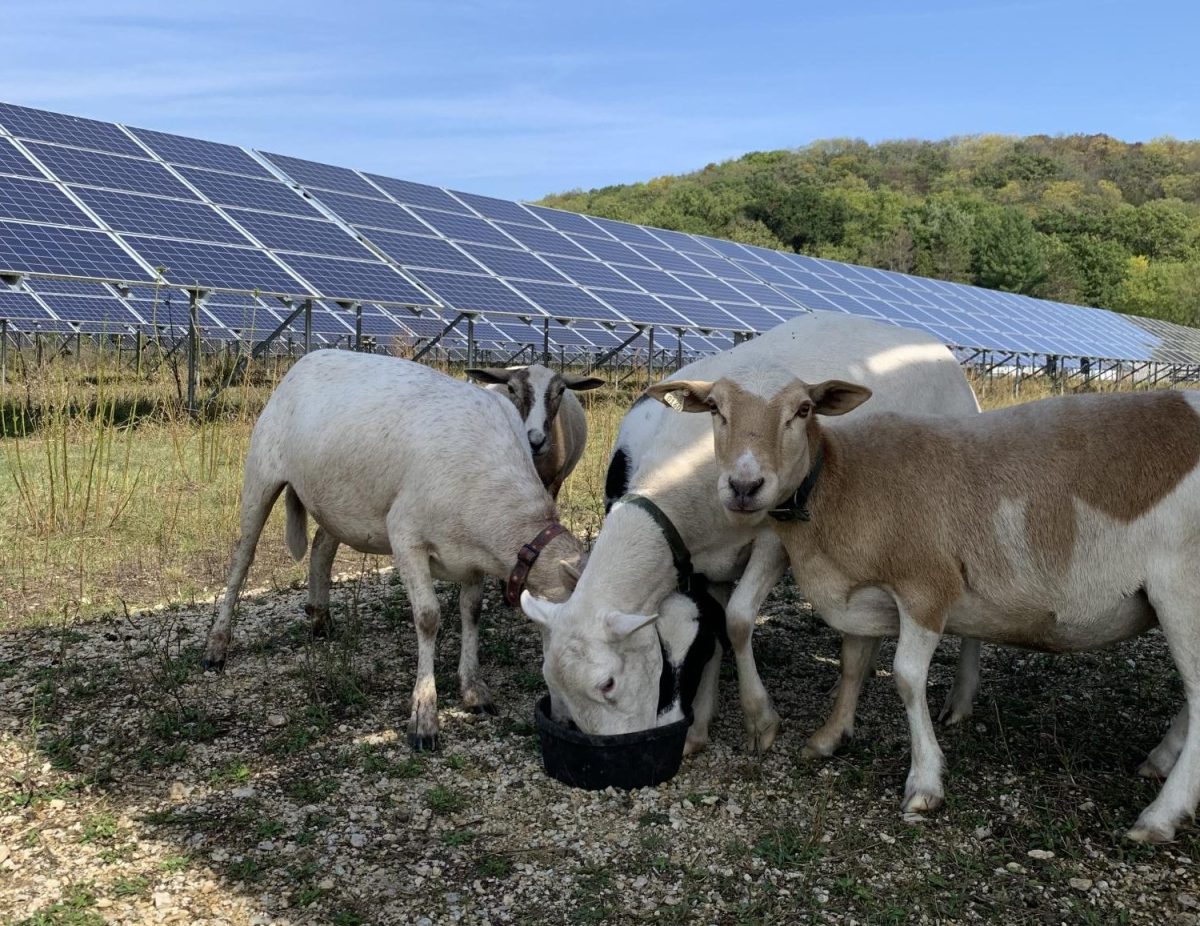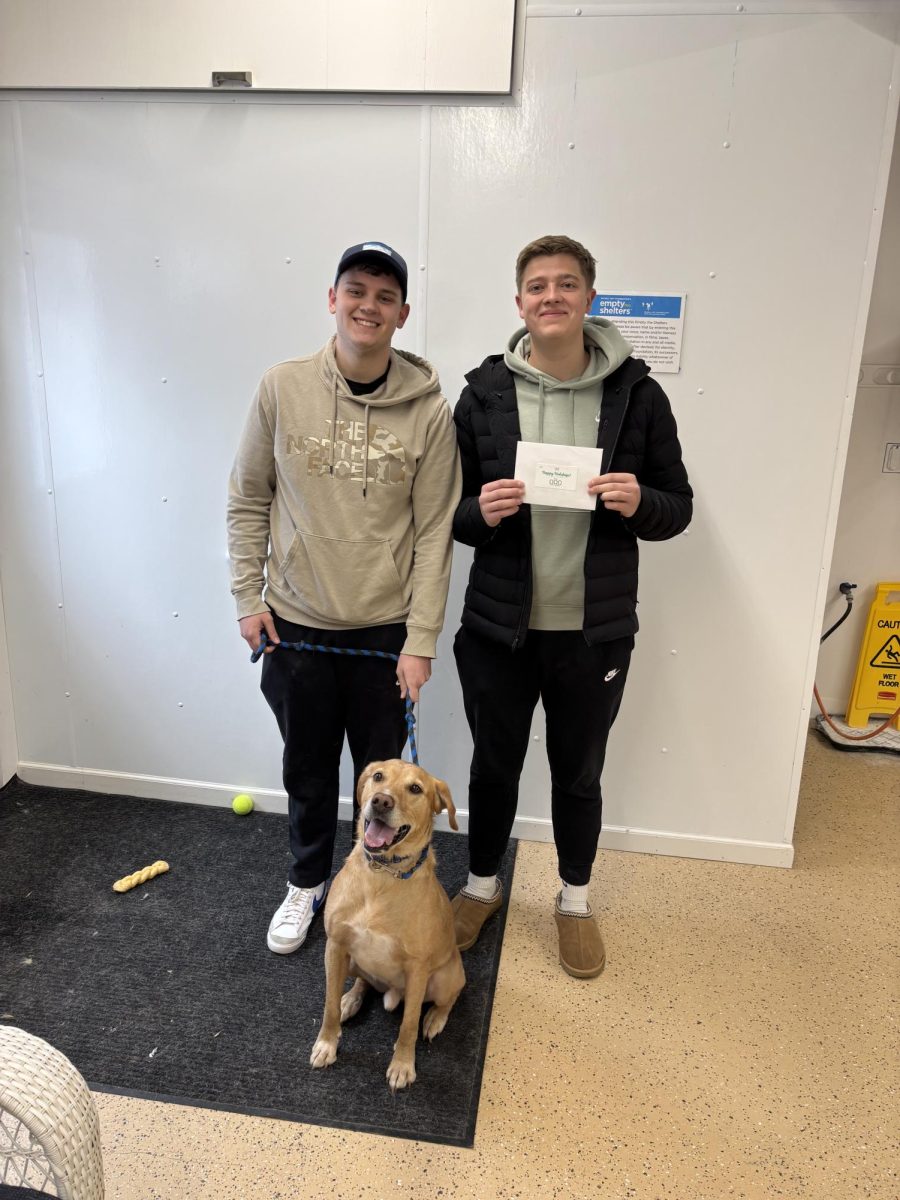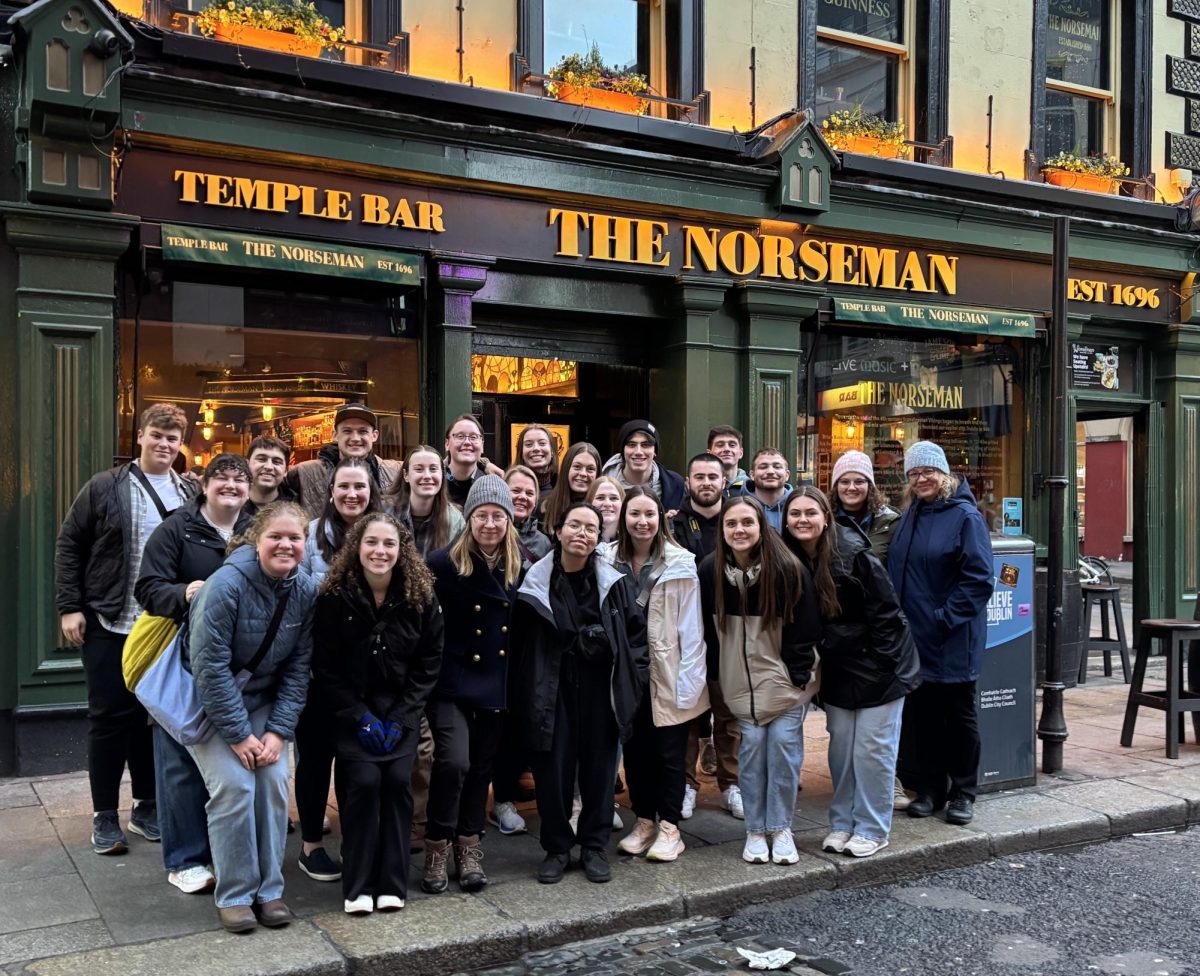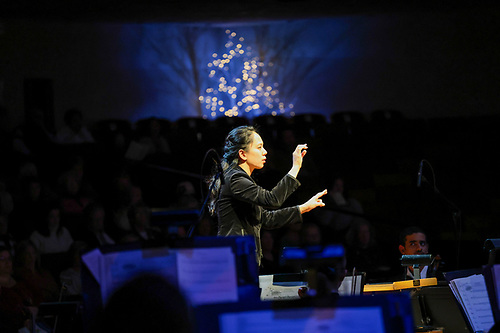If you wander down to the solar fields along Pole Line Road, you may be greeted by a flock of sheep acting as lawn mowers in and around the solar arrays.
Organized by the Luther College Center for Sustainable Communities (CSC), this project has been in place for three years, with the intent of vegetation management both in between the rows of solar panels and underneath them. Controlling vegetation growth is incredibly important in solar fields, since the vegetation can potentially shade the panels and cause problems with productivity and efficiency. Director of the CSC Professor Jon Jensen (‘89) explained this somewhat unique approach to vegetation control.
“What happens on commercial solar fields is they use large amounts of herbicide to kill off all of the vegetation underneath, so this just seems like a win-win,” Jensen said.
He also highlighted the community nature of this project. Student workers from the CSC haul compost from the cafeteria out to the compost site, and the solar fields are on the way. These students stop to check on the sheep, and make sure they have enough water for the day. Classes of students studying biomimicry get to interact with the sheep as well. Many of the financial investments that have gone into the Luther solar fields have come from the community — notably Larry Grimstad, a Decorah community member working in a partnership with the sheep, the students, the college, and the community.
Most vegetation management projects are contracted out to companies that bring in herds of sheep or goats to eat vegetation in areas. What makes this Luther project special is that it doesn’t follow the typical vegetation management scheme, but instead works within the Luther community.
“This has been a partnership, rather than a formal contract with an outside [contact], it has been done within the Luther family,” Jensen said.
Julie Strom (‘93), a Graphic Designer and Production Coordinator at Luther, is also a hobby farmer, and owns the sheep in the Luther solar field. The breed of sheep that make up Strom’s flock is a Katadhin hair sheep, which is a more low-maintenance breed of sheep than the typical wool sheep. They don’t need to be shorn or have their tails docked, and are overall smaller animals. The flock — which consists of Marshmallow, Lola, Betty White, Licorice, Marge, and Stella — are also incredibly friendly, and are happy to say hello to anybody that goes to visit them.
“Because I have a small flock, I need [the sheep] to be tame enough that I can catch them if I need to do any kind of vet care,” Strom said. ”It’s more fun for the students, because [they] can go in and actually touch them.”
Luther College also uses other animals in land management practices. In woodland areas, invasive species such as buckthorn and honeysuckle run wild, which makes many of these areas completely impenetrable. Since 2020 Luther has been bringing in flocks of 25 to 50 goats, and moving them around the natural areas of the region to help control these invasive species. Goats will eat absolutely any kind of vegetation that they are given, though they have a proclivity towards plants with thick stems, such as buckthorn. They will quickly mow through acres of buckthorn, keeping it from further spreading within the wooded areas.
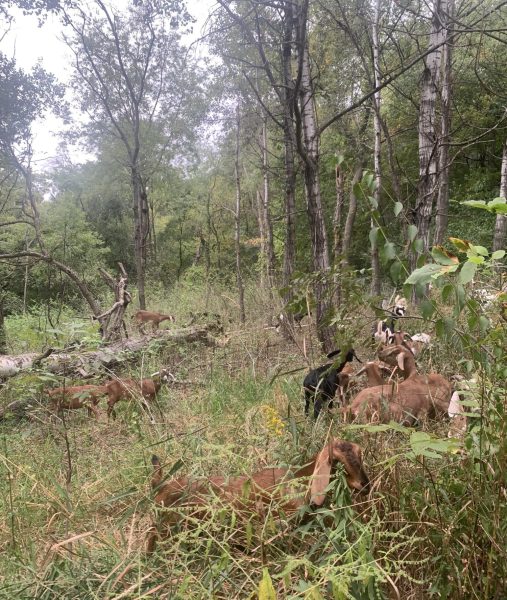
Professor of Biology and Luther Natural Areas Land Manager Dr. Molly McNicoll explained that with the sheep and the goats, utilizing the animals has allowed students and land stewardship interns to understand how they can use grazers as effective environmental managers.
“Goats are one tool in a toolbox,” McNicoll said. “What we’ve really learned is what the goats do well, and what are the other tools that we can pair with them.”
McNicoll views the community aspect of land management practices as one of the most important parts. Just like how the sheep came from Strom, Luther hires the goats from Decorah community members Kristin and Scott Propson as well as a company known as Hollyhock Goats.
“[Managing the goats] all together as part of a concerted effort has actually allowed us to become better land managers, which comes with time,” McNicoll said. “It’s the highlight for students to be able to work with them.”

